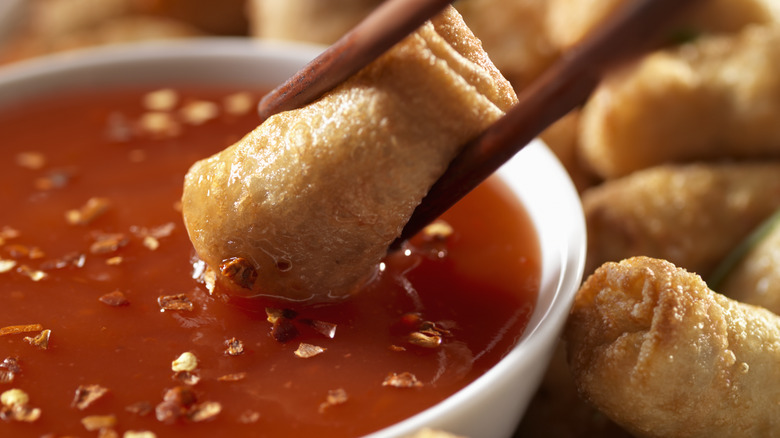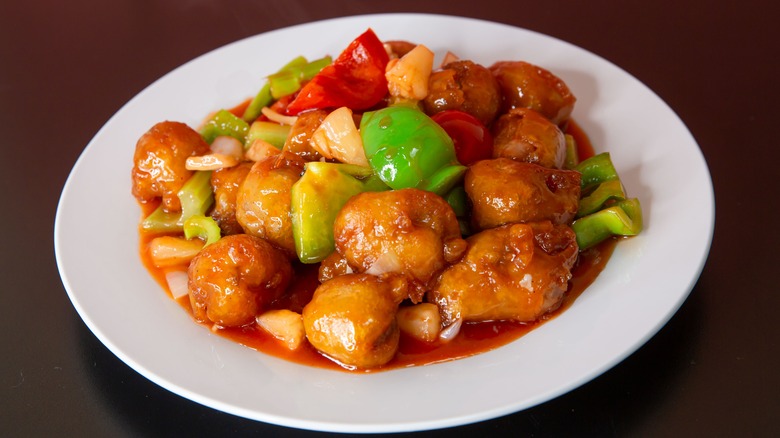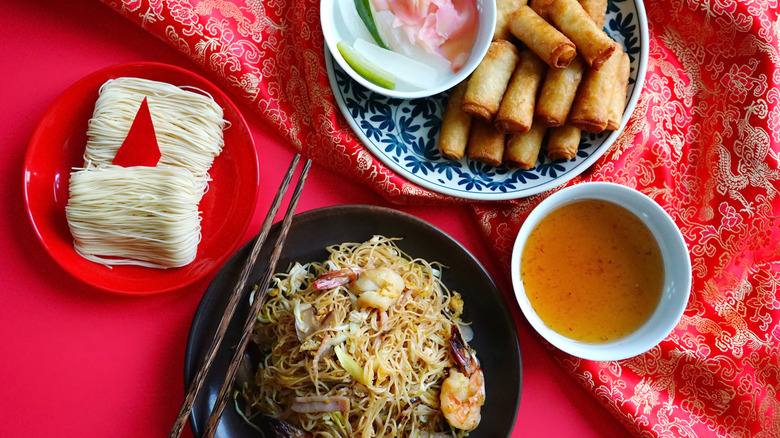What Is Sweet And Sour Sauce, Anyway?
They say variety is the spice of life, and nowhere is that sentiment more evident than in the world of sauces. That's probably why sweet and sour sauce, a condiment that mixes two opposing flavors, is so beloved. As its name suggests, the ubiquitous 'sweet and sour' sauce you think of when you picture your favorite Chinese takeout place is a mix of sweet and sour ingredients.
The typical sweet ingredients include sugar and pineapple while the sour elements are vinegar and ketchup. Sweet and sour sauce also commonly includes cornstarch, which serves as a thickener rather than contributing to the sauce's flavor. The sauce is most commonly used to make popular Asian dishes like sweet and sour chicken or sweet and sour Chinese cabbage. In North America, it's also typical to find packets of sweet and sour sauce at takeout or fast food establishments, which are used as a dipping sauce for chicken nuggets or fries.
The history of sweet and sour sauce
The sweet and sour flavor profile has been a part of Asian cuisine for hundreds of years — most likely during the 1700s. The bright red sweet and sour sauce we know today came to be in the 19th century when Chinese immigrants moved to the United States during the Gold Rush. They brought with them traditional recipes such as gu lou yuk, or sweet and sour pork.
Wanting to adapt their food to attract European-American diners, recipes for sweet and sour pork were tweaked and expanded to include the meals we see today, like sweet and sour cabbage soup and McDonald's famous Sweet & Sour dip.
The traditional Chinese recipe for sweet and sour sauce includes a Chinese berry called shanzha, which has since been replaced with ketchup. This is because ketchup is more familiar to Western civilization — not to mention, much easier to come by in the States.
There are many variations of sweet and sour sauce
While sugar, pineapple, vinegar, and ketchup are the typical ingredients used to make sweet and sour sauce, there aren't any hard and fast rules as to what you can and can't put in your dip. In fact, sweet and sour sauce has dozens of variations. Instead of using the usual pineapple and white sugar to bring sweetness, some chefs prefer to use apricot preserves, brown sugar, or even fresh cherry juice. Similarly, when it comes to the sour element of the sauce, some recipes call for white vinegar while others suggest apple cider vinegar or lime juice.
Certain sweet and sour sauce recipes include soy sauce for an extra kick of umami, ginger for spice, or bits of sweet pepper for added texture. If you're thinking of making a sweet and sour dish at home, you'll be glad to know there are a handful of methods to making the sauce, from using a slow cooker or blender to combining the ingredients in a saucepan, like in our sweet and sour fried chicken wings recipe.



